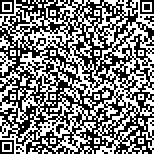Archive > Volume 41 Issue 6 > 2015,41(6):761-770. DOI:10.7519/j.issn.1000-0526.2015.06.011 Prev Next
Effect and Its Mechanism of Artificial Heat Wave on Coronary Heart Disease
- Article
- Figures
- Metrics
- Preview PDF
- Reference
- Related
- Cited by
- Materials
Abstract:
The influence mechanism of heat wave on coronary heart disease is preliminarily discussed through simulation experiment of heat wave impact on coronary heart disease rats in this paper. The heat wave process was simulated in an environmental test chamber (TEM1880). Eighteen coronary heart disease rats were randomly divided into control group, heat wave group and heat wave BH4 group with 6 rats in each group. The rats in heat wave group and BH4 group were placed into the simulation chamber. After the process of simulated heat wave, their blood was drawn by decollation and the mice hearts were extracted to measure the content of ET1, NO, HSP60, SOD, TNF, sICAM1 and HIF1α of rats in each group. The results showed that heat wave can lead to significant decrease of myocardial tissue’s SOD activity in coronary heart disease rats and increase of NO, HSP60, SOD, TNF, sICAM1 and HIF1α content. However, it has few effect on ET1 level. Through the analysis of biochemical index, heat waves can induce prominent increase of myocardial tissue’s HSP60 level in coronary heart disease rats. Superabundant HSP60 can activate immune cells, induce endothelial cells and macrophages to secrete a large number of inflammatory cytokines (such as ICAM1 and TNFα), and then activate inflammation system in the body, damage coronary vascular endothelial cells structure, increase vascular endothelial permeability and decrease heart tissue SOD activity, increase the lipoprotein of oxidation blood, generate a large amount of cholesterol, speed up the deposit of cholesterol on the lining of blood vessels through the lining, result in atherosclerosis and aggravation of coronary heart disease, then induce increase of vascular active matter such as ICAM1 and thromboxane, increase blood viscosity which is conducive to the formation of blood clots, restrain lipoprotein lipase activity, induce lipid infiltration of vascular intima which is conductive to arteriosclerosis plaque; and control the cholesterol metabolism of macrophage at the same time, which is conducive to the deposition of lipid material in vascular wall and thus increase risk of coronary artery disease. This is the preliminary mechanism of how high temperature and heat wave lead to exacerbation of coronary heart disease and even death, and can lay a foundamental theoretical basis for warning high temperature and heat wave in public service.
Keywords:
Project Supported:
Clc Number:


Mobile website









